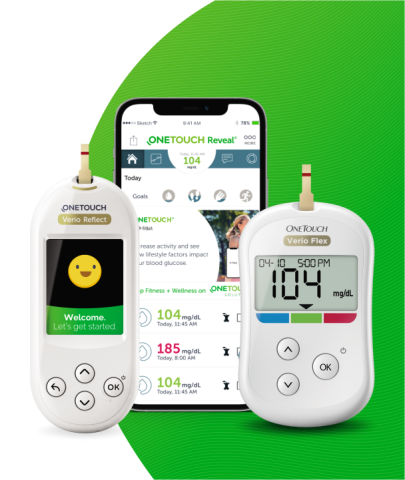-
Products

-
Accessories

-
OneTouch Verio® Control Solution

-
OneTouch Ultra Plus™ Control Solution

-
Carry Cases

-
Mobile
App
-
Getting
Started
-
Learn

-
Customer
Support
Being Physically Active

Being physically active is a key component of any diabetes management plan. Movement that increases energy use and increases heart rate and breathing above resting levels counts towards achieving your personal health and wellness goals. Breaking down your physical activity into smaller increments of at least 10 minutes, with a goal for adults of about 30 minutes or more every day on most days of the week, may make it easier to become consistent. Many everyday tasks can count as exercise, including walking the dog, cleaning the house, or yard work.
Physical activity can help to improve blood sugar control, contribute to weight loss, and reduce risks for heart disease, while improving overall well-being.
Precautions: taking care with physical activity
- If you have been inactive for a while, talk to your doctor before you engage in an exercise program
- Start easy and slowly increase how long and how much you exercise
- Check your blood sugar before exercise — you may need to have some carbs before you start, especially if you take insulin and your blood sugar level is less than 90mg/dL
- Have fast acting carbs handy in case your blood glucose drops during exercise, such as glucose tablets, hard candy, or juice
- Wear proper footwear: sneakers or comfortable shoes
- Warm up and cool down
- Check feet for sores or blisters before and after exercise, and restrict exercise as needed
- Drink plenty of water before, during and after exercise
Overcoming barriers
Here are tips that can help you overcome some of the barriers that may prevent you from being more physically active:
- Set achievable goals. Don’t compare yourself to others
- Be open to trying different activities
- Seek professional help if you have special health conditions or physical challenges
- Set a specific time to exercise and make it part of your daily routine
- Find a partner to exercise with to help motivate you
- Find close and easy access to exercise and resources for exercise
- If you can’t afford a gym, consider low-cost home equipment, such as stretch cords, a floor mat, a few weights, exercise videos, or using your own body weight for resistance
- Be mindful of long periods of inactivity during your day: interrupt long periods of sitting by standing and/or taking a few steps every 30 minutes, if possible
- Challenge yourself as you improve
Source:
American Diabetes Association. Fitness. https://www.diabetes.org/healthy-living/fitness Last accessed online May 2, 2022
American Diabetes Association. Lifestyle Management: Standards of medical Care in Diabetes. https://diabetesjournals.org/care/article/42/Supplement_1/S46/31274/5-Lifestyle-Management-Standards-of-Medical-Care Last accessed online May 13, 2022.
Related articles
US-VRF-1900017








